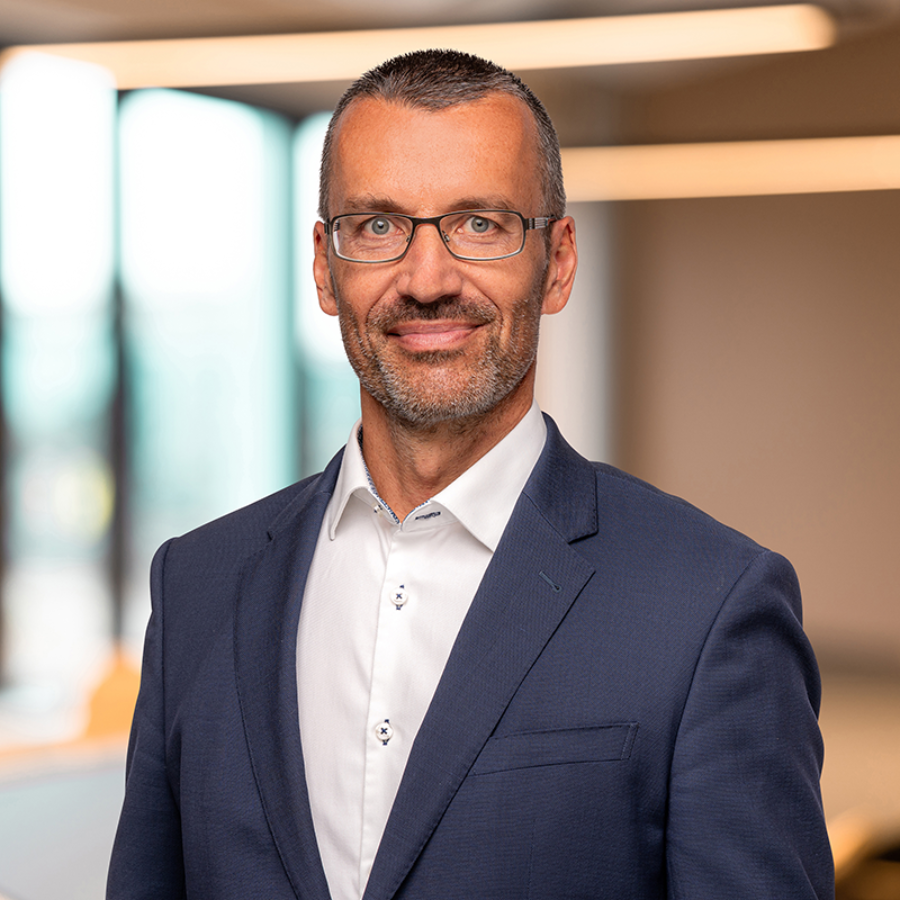After years of relative underperformance versus large caps, signs of a trend reversal are mounting in the European small- and micro-cap segment. Valuation discounts near record levels and the ongoing rate-cutting cycle have long provided an attractive foundation – but now, genuine momentum is emerging in the segment: capital flows are returning to Europe, the economic outlook is improving, and market breadth is visibly increasing. In this environment, smaller companies – especially micro caps – are beginning to do what they have historically done: outperform large caps.
Market Developments and Fund Performance
Over the long term, the most profitable European small and micro caps have been among the best performers. This is also shown in Figure 1, which illustrates the relative performance of the top 30% most profitable small and micro caps compared to the MSCI Europe Large Cap Index, indexed to 100 in 1996. Despite intermittent setbacks, their cumulative performance over this period has been significantly higher. In recent years, small and micro caps have come under pressure – as seen in previous market phases. Since the beginning of 2025, signs of a trend reversal have been increasing.
Fig. 1: Top 30% RoE small and mid caps significantly outperform large caps over the long term
with renewed positive momentum
Year to date as of end-June 2025, European small caps posted solid gains overall: the MSCI Europe Small Cap recorded a performance of +12.23%, European micro caps came in at +9.73%, placing them even ahead of large caps (+8.19%).
Fig. 2: H1 2025 performance of selected indices and Berenberg European Micro Cap
In this market environment, the Berenberg European Micro Cap Fund delivered a strong performance. As of 30 June 2025, the fund achieved an absolute return of +14.07%, representing an outperformance of 4.34 percentage points versus the benchmark (M share class). Performance was driven both by holdings that regained momentum following temporary operational weakness and by selectively adding new positions, some of which posted outstanding share price gains.
Illustrative of the positive contribution from newly added positions are:
- STIF SA: The French specialist in safety technology for battery storage systems benefits from the global expansion of stationary energy storage and battery infrastructure. Its protection systems prevent battery fires from spreading uncontrollably– a key safety requirement in large-scale power storage projects and often mandated by regulation. STIF has established itself as the technical market leader in this niche and is indispensable to clients such as Tesla, Fluence, and Sungrow. In 2024, the company quadrupled its operating profit, driven by the rapidly growing energy division, which now accounts for nearly half of its total business. Geographically, STIF is expanding beyond Europe and the U.S., securing its first major contracts in Asia and maintaining a well-filled project pipeline. This progress is reflected in the share price, which more than doubled in the first half of the year (+151.9%).
STIF emerging as a global key provider of battery protection systems
- RaySearch Laboratories: The company, led by founder Johan Löf, develops software for the highly precise planning and delivery of radiation therapy. At its core is RayStation – the most powerful solution on the market – already in use at many leading cancer centers worldwide. With organic revenue growth of over 15% per year over the past decade, a loyal customer base, and a strong track record in market penetration, RaySearch is regarded as the technical market leader in its segment. Recently, operational momentum has accelerated further: in Q1 2025, order intake rose by more than 70% year-on-year, and adjusted EBIT more than doubled compared to the previous year – coming in roughly one third above expectations. The share price rose by approximately 55% in the first half of the year.
RaySearch accelerates operationally and significantly exceeds expectations
Valuation discounts, the interest rate reversal, and economic recovery provide support
The underperformance of European small and micro caps relative to large caps has reached historically extreme levels in recent years. Valuation discounts – measured, for example, by the price-to-earnings ratio – have at times approached record highs. Although this gap has narrowed somewhat recently, small and micro caps remain significantly undervalued by historical standards.
Fig. 3: European small caps are trading at a historically high discount to large caps
Positive drivers now appear to be gaining the upper hand: as seen in previous cycles, monetary easing is beginning to translate into an improving economic outlook. Without pre-empting our current publication "European Equities Revival - Wind of Change could be of Structural Nature", there are now clear signs of economic recovery in Europe. In addition to the globally emerging trend toward monetary easing, the recently adopted German fiscal package is playing a key role in lifting sentiment and leading indicators. Economic momentum is picking up – an environment that has historically supported the renewed outperformance of small and micro caps.
Fig. 4: Rate-cutting cycles as a leading indicator for economic recovery in Europe
Net hikes/cuts by global central banks vs. eurozone economic indicator & small vs. large caps in Europe, year-on-year comparison
Market environment turning: Positive market breadth and capital flows
From our perspective, the renewed broadening of market participation after a prolonged period can also be seen as a positive development. In previous quarters, equity market gains in Europe were heavily concentrated in a narrow set of stocks – particularly in banks, insurers, defence names, and select German industrials. In recent weeks, however, a significantly broader picture has emerged – across both sectors and countries. Today, more than 50% of stocks headquartered in Europe with a market capitalisation between EUR 60 million and EUR 6 billion are trading above their 100-day moving average – potentially signaling the early stages of a sustained trend reversal.
Fig. 5: Broadening market participation as an additional positive signal
Market breadth in Europe: Share of stocks trading above the 100-day moving average by sector and country
A trend reversal is also emerging in capital flows: For the first time since 2022, European equity markets and funds are once again recording noticeable inflows. After a prolonged period of persistent outflows, institutional investor confidence is gradually returning. While the picture in the small- and micro-cap segment is not yet consistently positive, one thing is clear: the phase of pronounced outflows appears to be over.
Fig. 6: Capital Flows in Europe, particularly in Germany, are improving
Cumulative capital flows since January 2022 (% of AUM)
Fig. 7: Flows in the Small Cap Segment
Estimated fund flows in EUR billion for 413 actively managed European and global small-cap funds
Positioning of the Berenberg European Micro Cap Fund
Since the beginning of the year, we have further refined our portfolio positioning:
- Initiated positions in high-quality financial platforms benefiting from increased trading volumes and supportive structural trends (e.g. Hellenic Exchanges, Smartbroker, or Lang & Schwarz)
- Increased or initiated exposure to companies positively linked to the German fiscal stimulus package, such as Süss Microtec, Basler, MBB, or Pfisterer
- Enhanced allocation to European companies with limited U.S. exposure and consequently lower tariff risk, including Chapters Group, Meier Tobler, or Cicor
- At the same time, we selectively reduced our exposure to the healthcare sector, e.g. Chemometec, Surgical Science Sweden, and Stille
Our disciplined bottom-up approach, focused on quality, structural growth, and high capital returns, leads to a strategic overweight in the technology, industrials, and healthcare sectors, while deliberately underweighting traditional banks, insurers, and real estate holdings. Instead, we allocate capital selectively to financial platforms with high operational leverage and strong customer retention.
Fig. 8: Portfolio Changes in the Berenberg European Micro Cap Fund
Absolute weightings in % versus prior year
The Q1 2025 earnings season confirms what has already been suggested in previous quarters – a gradual yet tangible improvement across the board. Since Q3 2024, we have observed increasing operational progress, which is now also reflected in the most recent corporate results. Many of our portfolio companies report rising demand, improved visibility, and growing investment appetite on the customer side. Market reactions have been correspondingly positive, indicating that investors have started to appreciate a more positive development once again.
Conclusion
The combination of historically attractive valuations, increasing market breadth, and an improving economic outlook amid falling interest rates points to a sustained recovery in the European micro-cap segment. Our active, bottom-up investment approach with a focus on quality and niche market leadership positions us well to participate disproportionately in this development.
Why invest in micro caps with Berenberg?
- Consistent quality/growth bottom-up approach focused on the world’s smallest attractive companies
- High Active Share (>90%) with significant benchmark deviation
- Diversified portfolio of 90–120 holdings
- Exploiting information inefficiencies in under-researched stocks
- Dedicated team with long-standing experience and award-winning lead portfolio manager Peter Kraus
- Long-term investment horizon of 5+ years
Opportunities and Risks
Authors

Peter Kraus
Peter Kraus has been Head of Small Cap Equities at Berenberg since October 2017. He began his career in 2000 as an equity analyst for a corporate finance consultancy in Munich before moving to Deka-Investment in Frankfurt in 2003. There he worked as an analyst for European Small Caps. In 2006 he joined Allianz Global Investors as Fund Manager for European Micro and Small/Mid Caps, where he contributed significantly to the success of the Small Cap team in the following years. Peter Kraus was responsible for the management of various European Small and Mid Cap funds as well as for the acquisition and management of international institutional mandates. He studied Business Administration at the University of Mannheim and is a CFA Charterholder.

Johann Abrahams
Johann Abrahams joined Berenberg as a Portfolio Manager in January 2020. Previously, he completed the Berenberg International Graduate Program with assignments in Sell-Side Equity Research, Equity sales, ECM, Syndicate, Quantitative and Discretionary Asset Management. Johann Abrahams holds a Bachelor of Science in Economics from the University of Mannheim, a Master in Finance and Economics from the London School of Economics and is a CFA Charterholder.
Your contact person

Selin Ceylan
Selin Ceylan has been Product Specialist for the discretionary Equity Portfolio Management team since June 2020. Before joining Berenberg, she worked in the Investment Management division of Morgan Stanley from 2018 to 2019. Selin Ceylan holds a Bachelor of Science in International Management and a Master of Finance from Frankfurt School of Finance & Management in Germany.




